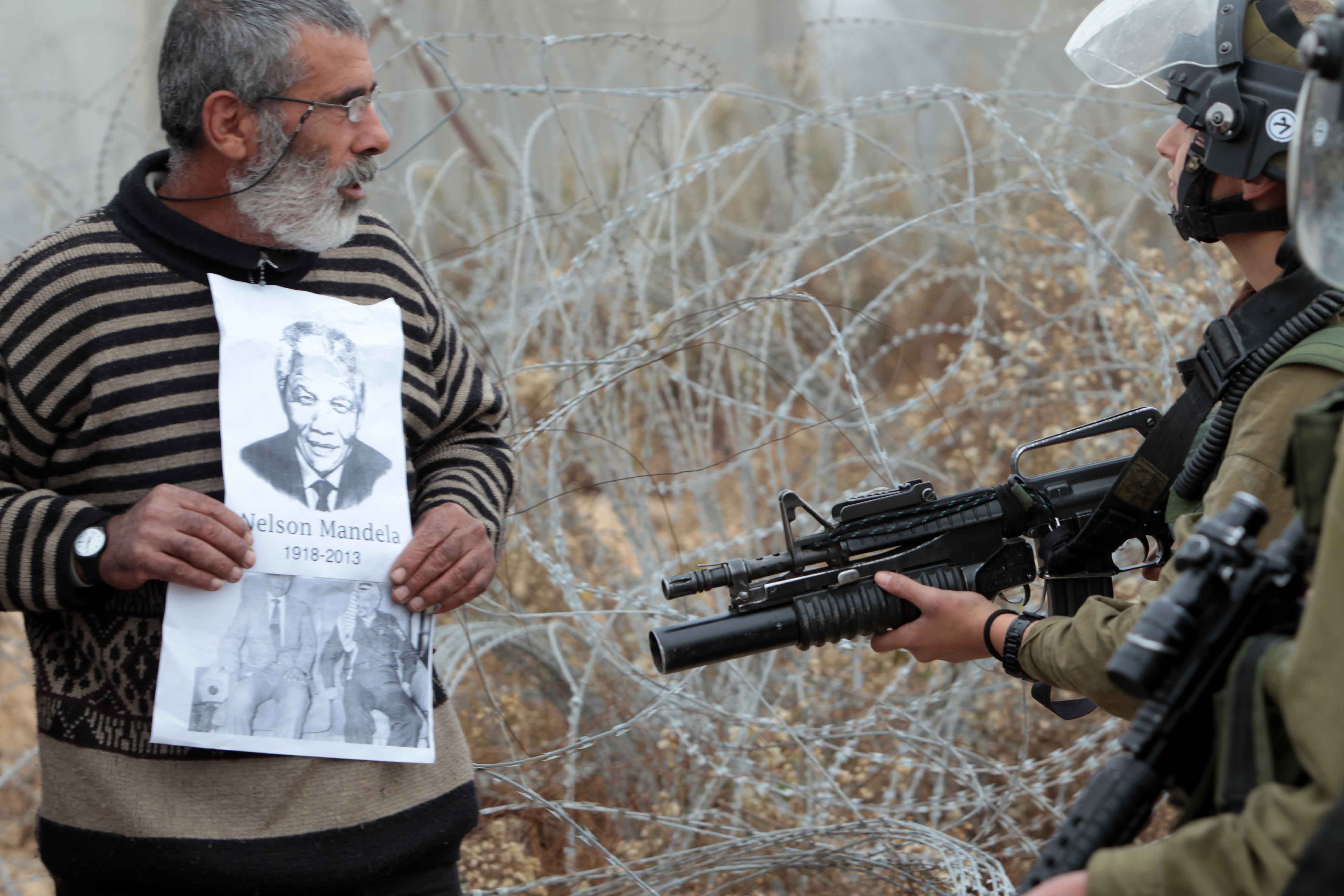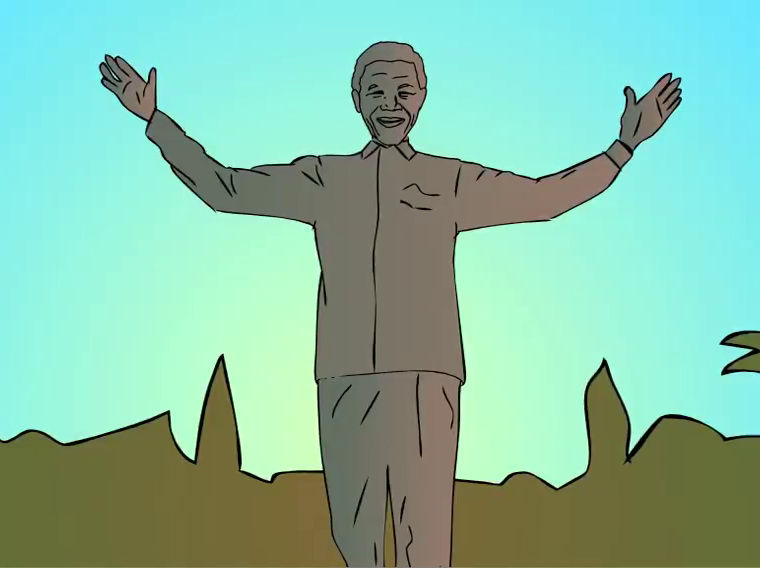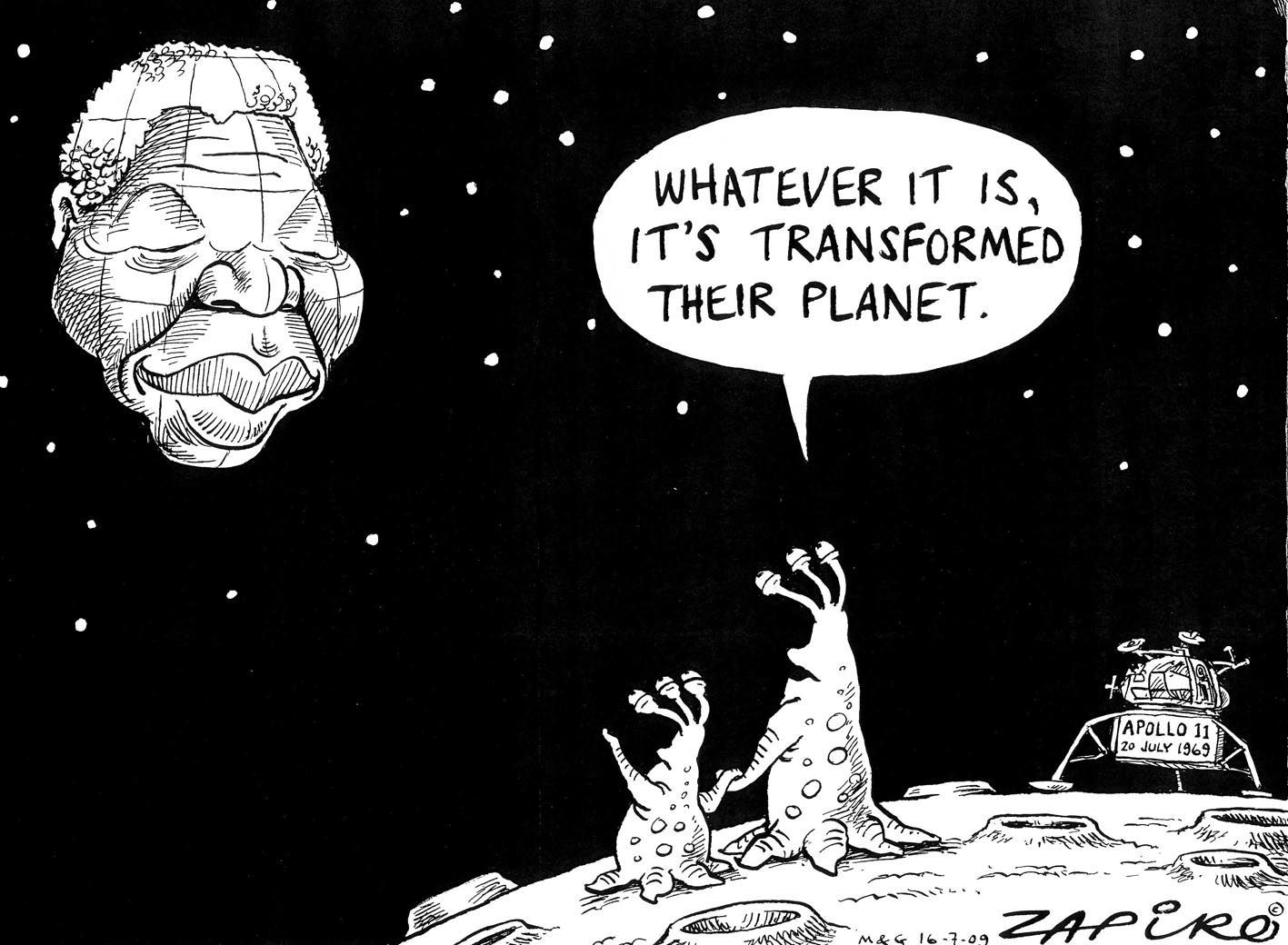
The world pays tribute to Mandela (slideshow)
As South Africans come to terms with the loss of former president Nelson Mandela, the rest of the world bids farewell to Madiba.

Pimples: Saving Madiba's rabbit (video)
Gwede, Mac and Blade try their best to stop the rabbit from whispering in Mandela's ear. But the elusive animal has some tricks up its sleeve.

Zapiro's best Madiba cartoons (slideshow)
From his toughest moments to his most triumphant, Madiba has been an inspiration. Here are some of our favourite Zapiro cartoons about him from 1994 to 2013.

Mandela: SA's greatest son laid to rest (slideshow)
The world watched as Nelson Mandela was finally laid to rest in his hometown of Qunu following a dignified and moving funeral ceremony on Sunday.
The Nelson Mandela Foundation (NMF) — a non-profit organisation started in September 1999 to expand and formalise the work Mandela has done throughout his life — has threatened to prosecute anyone attempting to profit from representing his image in any guise whatsoever. This is in terms of an obscure piece of legislation known as the Marks Merchandise Act that tries to protect national symbols such as coats of arms, flags and trademarks from being exploited.
The 1941 Act is a rather outdated piece of legislation that was recently amended principally for the purpose of preventing imported goods from being passed off as home-produced products. In fact, the Act is rarely used to prosecutte offenders and has been replaced to a large extent by the Counterfeit Act. But this still means that vast numbers of South African artists — some of whom have made their mark in the international arena by 'quoting” Mandela's image — might be on the hit list.
Last week the first offender to feel the wrath (indirectly) of the NFM was artist Yiul Damaso who has begun making a name for himself by representing Madiba as — among other guises — a Rastafarian. A Sunday newspaper reported that NMF spokesperson Helen le Grange had insisted that Damaso immediately desist from selling the portraits. This has sent a nripple of alarm through South Africa's gallery circuit, some of which promptly removed all paintings containing or including any reference to Madiba.
For example, Art & Frame in Sandton City has taken down two portraits by artist Wouter du Preez. Gallery owner Pat Redman refused to comment, except to say that neither she nor the artist intended to anger the NMF.
And in a bizarre twist to the unfolding tale of marks and merchandise mayhem, exhibitors at the World Summit on Sustainable Development's Ubuntu Village have reportedly been told by NMF attorney
Ishmael Ayob to take down all images of the former president.
Says Jacob Khumalo, an unemployed, self-taught artist from KwaZulu-Natal who was an exhibitor at the Ubuntu crafts and arts fair: 'Some of us painted the portraits from existing photographs to show our admiration for Madiba — nothing more. Yet now we are prevented from benefiting from the Earth Summit, because of this stupid law which nobody told us about.”
Khumalo says he had already sold two paintings of Mandela to visiting dignitaries before 'this arrogant man ordered us to stop”.
Ayob and Le Grange were unavailable for comment despite repeated phone calls and e-mails sent by the Mail & Guardian.
And the artist who 'caused all the trouble” — Damaso —insists that he hasn't heard a word from them either. He has vowed to continue displaying the paintings until ordered directly to stop.
'Each of the Madiba paintings was executed for different reasons, but all emanate from a sense of endearment and admiration for Madiba,” he says. In fact, Damaso has never personally met Madiba and — as is the case with many South African artists — one of his Mandela portraits was adapted from a famous image shot by photographer Jurgen Schadeberg, who himself has been the victim of numerous intellectual property violations. But lest he get hauled over the coals for copyright violation, Damaso requested and received permission from Schadeberg to adapt the image.
Damaso has also come up with an innovative marketing strategy to commemorate Aids awareness 'in the spirit of patriotism”.
He has advertised an Aids ribbon, toothpick and paper clip at three venues — Hyde Park Gallery, Mimmo's in Rosebank and Baglios at Sandton Square. Buy a ribbon, clip or toothpick for R48 000 — a percentage of which will be donated to an Aids charity — and receive a Mandela painting for free!
Whether this is a cynical comment on the arbitrary value of contemporary art, a cheap gimmick, a canny marketing ploy or a genuine effort to circumvent the slippery slopes of South Africa's intellectual property and merchandising laws, remains to be seen.
What is evident for now, however, is that when it comes to protecting or preserving intellectual property South African law lags hopelessly behind advances in image merchandising. Today technology and the information age have succeeded in blurring the boundaries between the personal and the public by reproducing and representing famous images in order to sell products and services.
On the one hand this practise constitutes the hallmark of a free society. On the other hand, it inevitably raises questions concerning the rights of celebrities whose images have been appropriated without their consent.
Such was the case again with Madiba when his beaming countenance was used to endorse a chain of international hotels that the former president had never visited. The commercial, which was shot in London and appeared in American newspapers, was lambasted for appropriating Mandela's image without his consent. The price paid for putting words into his mouth was that the hotel chain had to eat theirs and the ad was promptly withdrawn.
But unauthorised representation of a famous image does not automatically entitle an aggrieved party to damages. In the United States privacy laws offer greater protection for famous faces. But in South Africa the law remains vague. The trademark still remains the most viable form of protection.
Does this mean that Mandela is registered as a trademark? Although the NMF has failed to provide the M&G with registration dates and details, one can only hope that they have succeeded where the custodians of the images of Elvis Presley, Princess Diana and pop group Abba have failed: protecting South Africa's most famous icon from exploitation — intentionally orotherwise.
After all, what's in a name?
The answer today is inevitably: everything.

